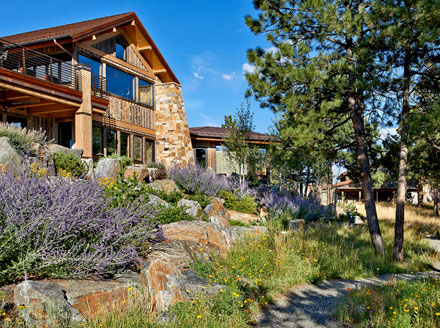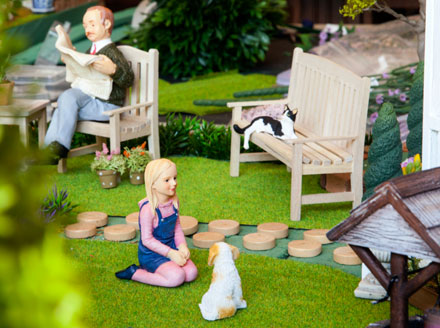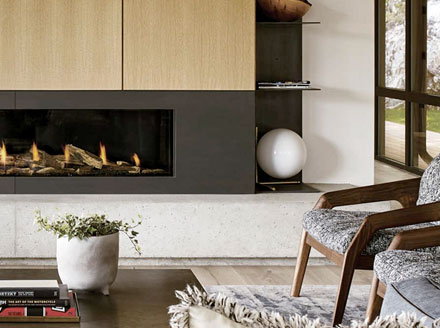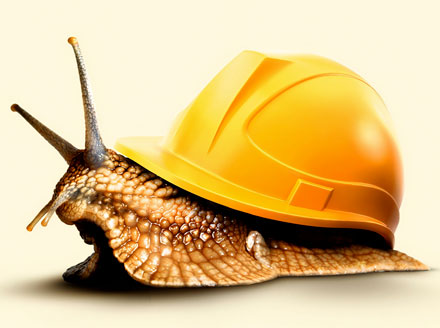Share This Post:
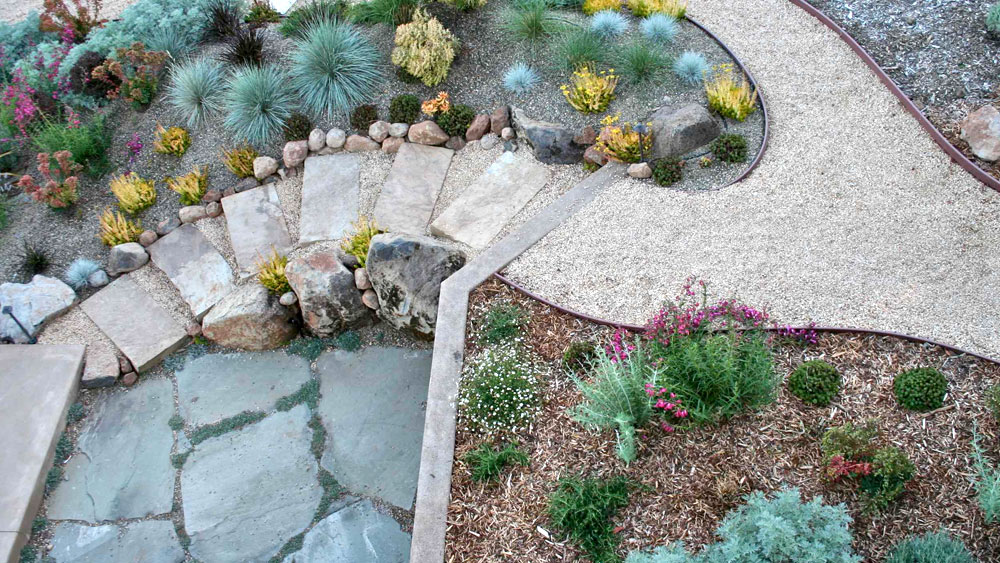
Image Credit: Urban Botanics
Xeriscaping - Mulch It Over
Xeriscaping - Mulch
This is post 5 of 7 in the series Xeriscaping Isn't Just For The Desert
This is post 5 of 7 in the series
Xeriscaping For Any Climate
LANDSCAPING | Carolyn Feinstein | June 10, 2020
LANDSCAPING | Carolyn Feinstein
June 10, 2020
It's time to put the icing on the xeriscaped cake - selecting your mulch. Mulches are a vital step to completing a xeriscape. They minimize water evaporation, protect plants' roots from burning, and block the growth of invasive vegetation that steal nutrients from your plantings. But, selecting the right mulch for various areas around your yard requires consideration of more than just the aesthetic.
There are two general types of mulch that can be applied to xeriscape:
- Organic
- Inorganic
Organic Mulch
We are all familiar with organic mulches, like bark chips, pole peelings, and wood grindings. These are great option for new beds. As the xeric plants become established and the bases grow outward, the organic mulches can easily be adjusted to accommodate the additional space required. For adequate protection, it should be applied at least 4 inches deep. That's a lot of mulch, but it's worth the backache to ensure it's done correctly. This will hold in moisture, prevent weeds, and protect the plants' roots from burning.
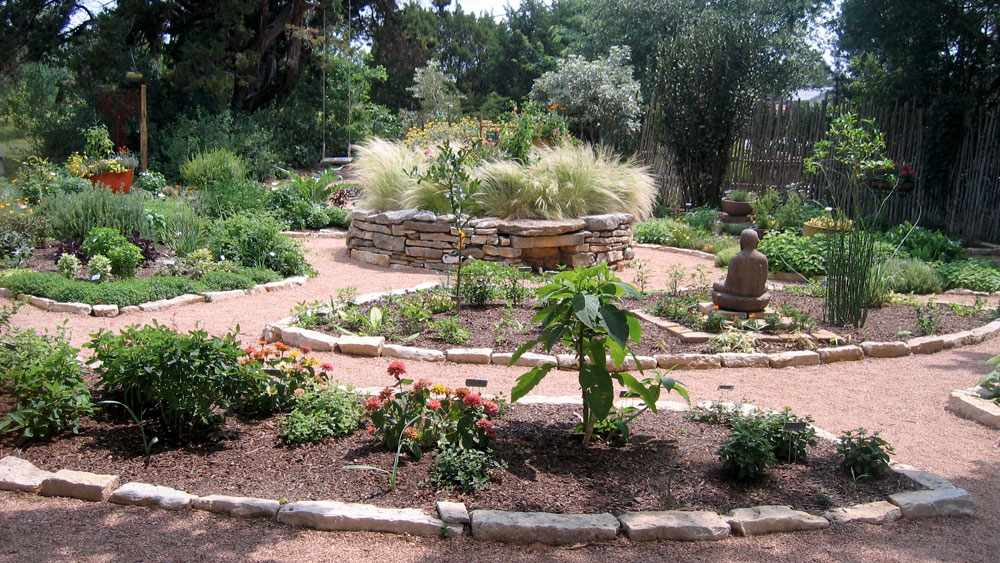
Image Credit: Habitat Network
Speaking of weeds, if you decide to lay down a weed block do not use black plastic. Sure, you have all of those leftover contractor bags in the garage, but that doesn't mean they belong in the ground. Those bags contain harmful materials that will leach into your soil (thus undoing your work of carefully planning your soil amendments), as well as block water and sunlight from reaching your soil. You risk killing all of those helpful earthworms and microorganisms you have encouraged to set up house in your xeriscape to keep your plants healthy. Choose a breathable, fabric-based weed-block. As an alternative to weed block, give the soil a serious dig, remove any existing roots, and provide a deep mulch covering.
Many commercially available mulches have been chemically dyed to prevent decomposition, pests, and mildew. It's wood. Let it decompose. This is simply a fact of life when using organic matter. As for pesticides and fungicides - if you are encouraging microorganisms that combat pests and fungus, why do you need it? I look at it like adding salt to soup; You can always add it later, but once it's in the pot, you can never take it out. If you start off with chemicals in your xeriscape, you can never remove them completely. Give the natural approach a try before you resort to pesticides. Look for an all-natural mulch from native trees. It might even save you a few bucks buying a local product!
Inorganic Mulch
Inorganic mulches are probably what you envision when someone says "xeriscaping". These are the gravels, stones, and river rocks that are popular, especially in the more arid climates. Although stone can be more of an upfront cost, it does not require the replenishment and maintenance of an organic mulch. In contrast to wood chips, rocks and gravel can sustain leaf blowers, heavy rain, and wind. The rocks need to be a minimum of 2-inches deep to adequately protect against evaporation.
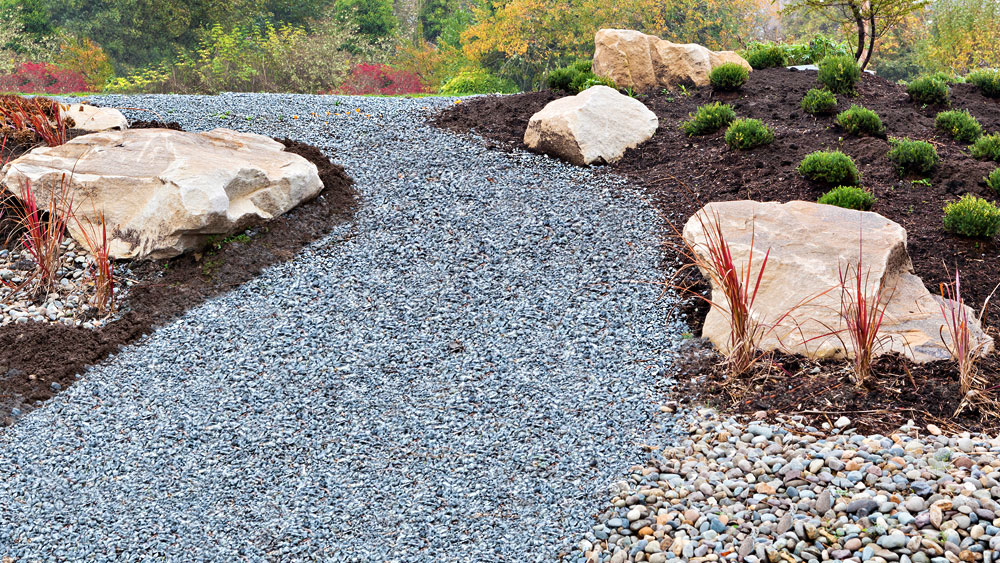
Image Credit: Getty Images
Using inorganic mulches can provide varying colors and textures to highlight areas of the xeriscape, however, you need to be mindful of the sun exposure to these areas. Stone can trap and radiate the heat of the sun. If used on great expanses, or on the sunny and west sides of the house, this could lead to burned vegetation, increased surface temperatures and higher energy bills to cool your home.
I prefer to mix the types of mulches I utilize in a xeriscape. Clean lines of organic mulch and gravel, or river rock beds laid between boulders and crushed granite, provide visual interest and focal points. Covering 300 square feet with the same mulch can begin to look like a wasteland. Properly placed, your mulch selection will add beauty and function to your landscape for years to come.




